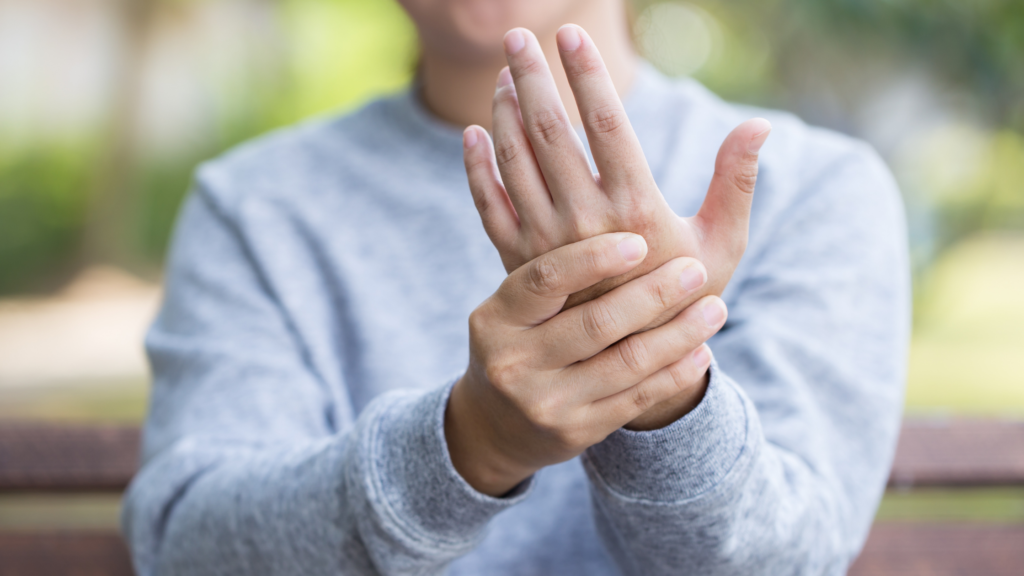
RA is an autoimmune disease causing inflammation of the joints. An autoimmune disease is when your body’s immune system produces a response against tissues or substances naturally present in your body. It is not known what triggers RA, but there is evidence to suggest certain lifestyle factors can increase your likelihood of developing it such as smoking, and a high caffeine and a high red meat intake. There is also a genetic component to your chances of developing RA.
A joint is where two bones meet. Surrounded by the synovium which has a thickened outer layer called the capsule, this structure helps to keep the joint together and lubricate the surfaces to allow for a smooth, gliding movement. In rheumatoid arthritis the synovium comes under attack from the immune system. It becomes inflamed, red and painful. There can be a loss of movement associated with this inflammation along with heat.
Those with RA will suffer flare-ups whereby the condition goes through episodes of irritation, followed by a period of ease. As this inflammation settles, the capsule becomes baggy and unsupportive as it has been stretched during the period of irritation. As a consequence, the joint becomes weakened, predisposing it to more pain and instability. The cartilage that covers the ends of the bones can wear and develop deformities because of this instability.
The nature of RA means that the sufferer cannot be cured, but medications and other treatments are very effective in managing the symptoms, which can also include lethargy, anaemia, depression, inflammation of other parts of the body and rheumatoid nodules.
Although it can affect any joint, rheumatoid arthritis tends to start with discomfort and stiffness in one area such as your hands or feet. Swelling tends to then commence with associated redness and heat. The prognosis varies but the majority of sufferers will continue to have occasional mild episodes of flare-ups. A minority will develop a more severe form of the disease with significant illness and disability.
As those with RA are vulnerable to other complications associated with their condition such as heart attack and stroke, it is vital their condition is managed well.
Treatment tends to be a combination of medication, physiotherapy and in some cases surgery.
Physiotherapy focuses on maintaining joint range of movement to prevent stiffness, strengthening the muscles that support your joints to counteract instability and reduce unnecessary wear and tear, and provision of equipment to help joint discomfort or improve gait.
- .Exercises might include balance tasks to hone the control of your joints via your muscles, stretches to keep joint range and strengthening exercises to improve endurance, power and stability.
- Exercises tend to be best done little and often in order to reduce the chances of irritating your joints and preventing fatigue. Find ways to tie your rehab into things you do day to day such as brushing your teeth, making a drink or television adverts.
- Exercises tend to be best done little and often in order to reduce the chances of irritating your joints and preventing fatigue. Find ways to tie your rehab in to things you do day to day such as brushing your teeth, making a drink or television adverts.
A physiotherapist can help to improve day-to-day living and function.


